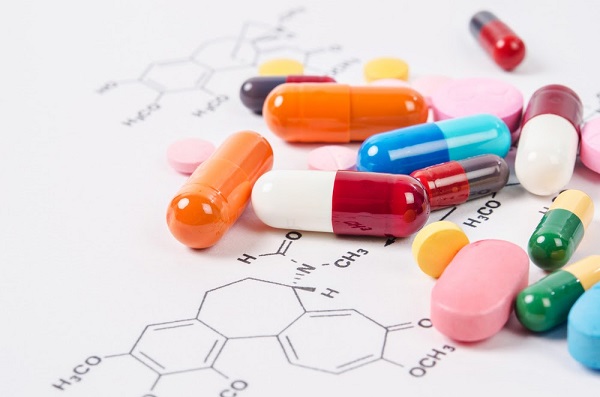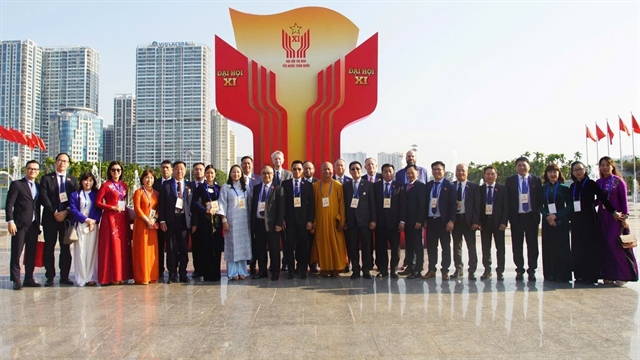 Society
Society

 |
| The objective is to secure affordable access to medication for all citizens. — VNS/VNA File Photo |
HÀ NỘI — Deputy Prime Minister Trần Hồng Hà recently backed a decision that has been hailed a significant milestone in Việt Nam's pharmaceutical sector.
Signed on October 9, Decision No. 1165/QĐ-TTg has approved the National Strategy for developing Việt Nam’s pharmaceutical industry until 2030, with a clear vision extending to 2045.
Ensuring affordable access to medicine
The paramount objective is to secure affordable access to medication for all citizens. The collective aim is to propel Việt Nam's pharmaceutical sector to the forefront, aligning it with the standards of advanced nations in the region.
This entails making sure that medicines remain accessible at reasonable costs. It also involves bolstering research capabilities and leveraging available technology to produce original brand-name drugs and modern dosage forms.
Ultimately, Việt Nam aspires to become a pivotal hub for manufacturing, processing, and technology transfer of brand-name drugs, particularly from the ASEAN region. Furthermore, the country is striving to elevate its domestic pharmaceutical industry to a WHO level 4 classification.
Simultaneously, there is a strong impetus to cultivate medicinal herbs, develop drugs and products from domestic medicinal sources, optimise the production of medicinal raw materials, and enhance medication usage.
The country’s targets by 2030 are ensuring 100 per cent proactive and timely drug supply for disease prevention and treatment; safeguarding drug security to meet the demands of national defence, security, disease prevention and control, as well as addressing the repercussions of natural disasters, crises, public health emergencies, and other pressing medical needs.
The strategy also aims at domestic medicine production meeting approximately 80 per cent of the demand for medicines and constituting 70 per cent of the market value; producing 20 per cent of the raw materials required for domestic drug production; and meeting 100 per cent of the demand for expanded vaccination and 30 per cent of the requirement for service vaccinations with domestically produced vaccines.
Becoming a regional pharmaceutical powerhouse
Việt Nam has set its sights on becoming a high-value pharmaceutical production hub within the region. This vision encompasses the reception of technology transfers, the seamless processing, and coordinated technology transfer efforts to manufacture at least 100 original brand-name drugs, vaccines, biological products, including similar biologics, and select drugs not previously manufactured in the country.
The strategy entails the establishment of eight sustainable zones for the exploitation of natural medicinal herbs and two to five areas dedicated to large-scale medicinal herb production. It includes efforts to restore, import, acclimatise and develop 10-15 species of medicinal plants originating from substantial imports. The ultimate goal is to achieve 100 per cent standardisation of medicinal ingredients, including extracts, essential oils and medicinal powders, for domestic drug production.
Việt Nam is committed to achieving WHO's level 3 or higher certification for the capacity of state management agencies responsible for pharmaceutical chemicals. It also places great emphasis on maintaining and enhancing WHO's certification for state management agencies overseeing vaccines.
Monitoring medications and enhancing accessibility
One of the core objectives outlined in this strategy is to ensure rigorous monitoring of all drugs available on the market. The pharmaceutical industry is committed to producing 30 per cent of generic drugs domestically, except for those with specific local or systemic effects that possess bioequivalent properties with reference drugs. These domestically produced and imported drugs must be certified with circulation registration and assessed as bioequivalent.
The sector will also try to ensure that 100 per cent of drugs in circulation are rigorously monitored and managed to guarantee their safety and effectiveness, adhering to regulations set forth by the Ministry of Health.
Digital transformation and modernisation
A critical aspect of the strategy involves the digital transformation of the pharmaceutical industry. Key initiatives include ensuring 100 per cent digitisation of information and data pertaining to drugs licensed for circulation that remain valid in Việt Nam. This data will be updated into the Pharmaceutical Industry Data Bank.
The sector will also work to establish connectivity among all drug manufacturing, wholesale, import-export, and retail establishments nationwide; guaranteeing the continuous operation of 100 per cent of level 4 online public services within the pharmaceutical sector, seamlessly integrated into the National Public Service Portal. Deploying artificial intelligence applications across various pharmaceutical industry activities is also included in the strategy.
Another pivotal goal is to achieve a pharmacist-to-population ratio of 4.0 pharmacists per 10,000 people. Notably, at least 20 per cent of these pharmacists will receive specialised training in clinical pharmacy.
Looking ahead to 2045, Việt Nam envisions domestically produced drugs not only meeting domestic demand but also significantly increasing their export value. The nation is committed to deep integration into the global pharmaceutical supply chain. This includes proactive production of specialised drugs, new medications, original brand-name drugs, vaccines, biological products and medicinal ingredients.
Furthermore, Việt Nam aims to develop and copyright original brand-name drugs derived from domestic medicinal sources. A key target is for the pharmaceutical industry to contribute over US$20 billion to the country's GDP, highlighting its substantial economic impact and global competitiveness.
The strategy highlights the importance of comprehensive monitoring and pharmacy services. It seeks to monitor and manage 100 per cent of drugs on the market for their effectiveness and safety. Moreover, it encourages the implementation of clinical pharmacy activities in all medical examination and treatment facilities. The goal is to provide high-quality pharmaceutical care services. — VNS




